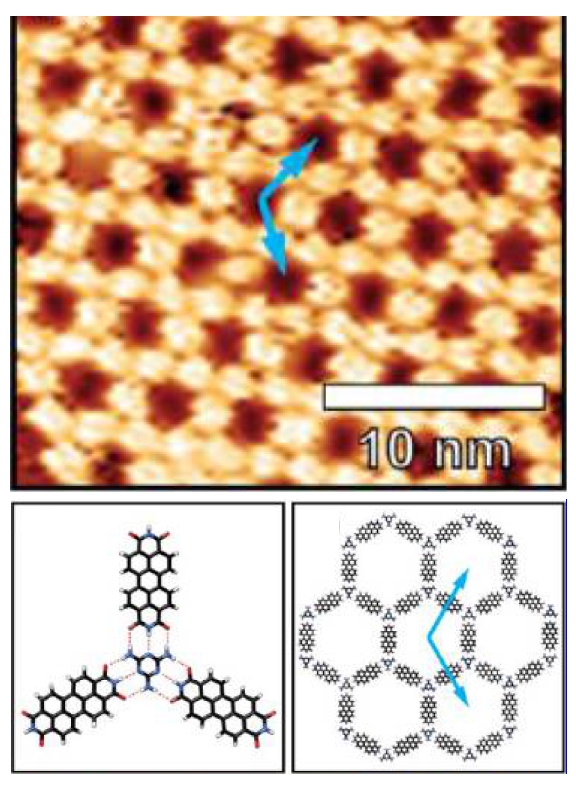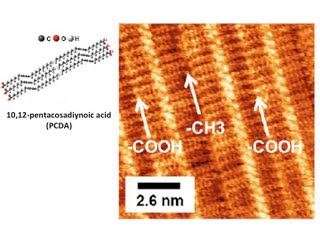
|
Hetero-molecular self-assembly with sub-5nm pore size on Graphene surfaceIn order to utilize the excellent electronic properties (high electron mobility), opening electron band gap for the gapless Graphene is highly desired. It has been demonstrated that to have applicable energy gap, graphene ribbons with width less than 10 nm is required. These graphene ribbons were mainly synthesized through top-down approaches, such as electron beam lithography. However, since graphene lattice has three-fold symmetry, the two dimensional ribbon structure has broken the symmetry of the graphene lattice, hence increase the scattering centers near the edge of graphene ribbons. To solve this problem, here, we adopted a bottom-up approach to modify graphene by means of non-covalent interactions on graphene surface. Two different organic molecules - PTCDI and melamine - have compatible structures to form directional hydrogen bonds. The resulting structure of the assemblies is hexagonal, same symmetry as the graphene. In addition to the non-covalent modification to graphene, the successful fabrication of the hexagonal assemblies could be further used as mask for subsequent stronger covalent modifications. Read more: H. J. Karmel et al., J. Phys. Chem. Lett. 5, 270 (2014). |

|
Sub-10 nm Templating for Atomic Layer Deposited Oxide on GrapheneSince the first successful isolation and transport measurement, graphene has been the focus of research. One of the reasons is that graphene has extraordinary high electron mobility for electronic applications. However, the gapless electronic structure makes graphene not ideal for making devices. In addition, chemically inert nature of graphene makes it even more difficult to handle. For example, the atomic layer deposition (ALD) growth of dielectric materials on graphene is suppressed. Here, we successfully utilized the ordered self-assembled chain-like organic molecules (10,12-pentacosadiynoic acid (PCDA)) as a template for oxide ALD growth. The grown oxide persist the line-like features and orders under controlled growth condition. This work paves the road to functionalize graphene for further modifications in nano-scale. Read more: J. M. P. Alaboson et al., Nano Lett. 13, 5763 (2013). |

